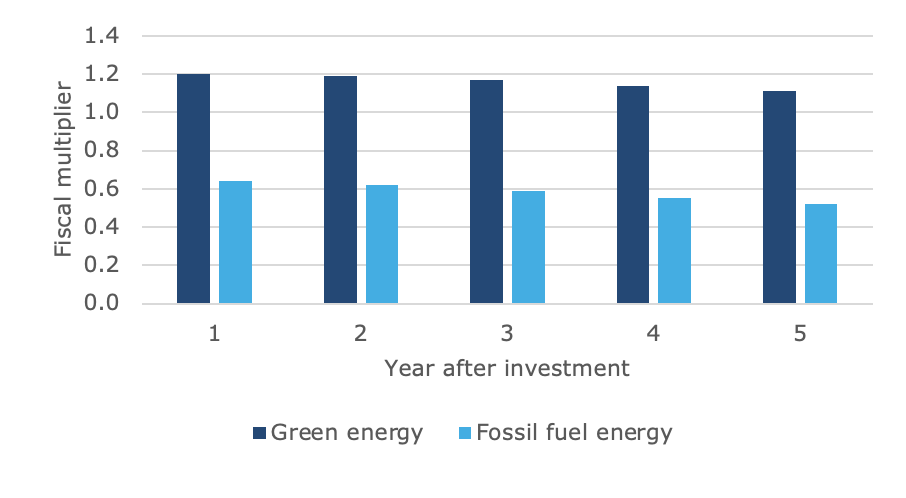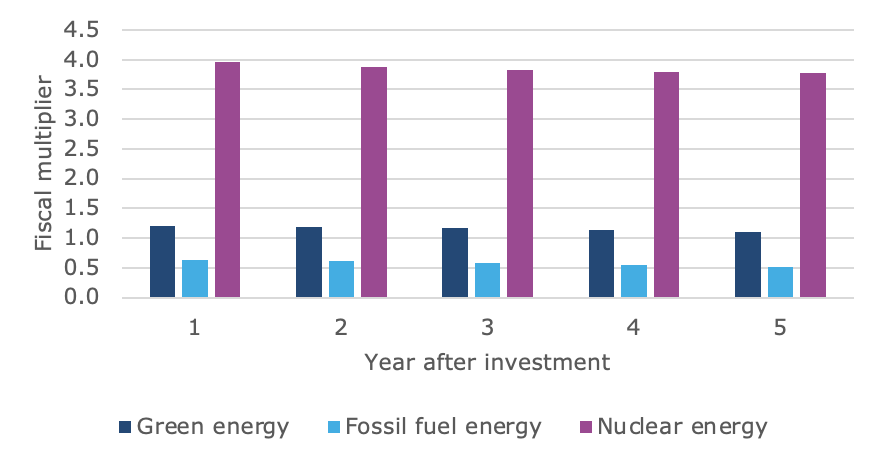Welche Energiewende am meisten Wohlstand schafft
“Klimagerechter Wohlstand” steht im Wahlprogramm der GRÜNEN. Ich interpretiere das als “weniger Wohlstand”, was die Politiker natürlich nicht so wollen. Sie schreiben lieber im längsten Wahlprogramm von allen – nachzuhören in meinem Podcast – allerlei nebulöse Versprechungen, um beim Wähler den Eindruck zu erwecken, ihre Agenda würde Wohlstand bringen. Was für ein Quatsch. Denn die Verteilung von Wohlstand schafft keinen. Nur mal so.
Egal. Welche Energiewende-Technologie schafft denn am meisten Wohlstand? Dies hat “Klement on Investing” – einfach googeln und abonnieren – schön auf den Punkt gebracht:
- “When it comes to government spending, a key variable to identify is the fiscal multiplier. The fiscal multiplier measures how much economic output rises in response to one additional Dollar/Pound/Euro invested by the government. (…) As a reference, most infrastructure investments like roads have a fiscal multiplier around 1.1 to 1.3.” – bto: Staatsausgaben führen dazu, dass die Wirtschaft um mehr wächst als die Staatsausgaben. Zumindest dann, wenn es wirklich Investitionen sind, die das Produktionspotenzial heben.
- “Nicoletta Batini and her colleagues have set out to measure the fiscal multiplier of green investments and compared them to the multipliers of other investments. To do that, they collected data on green energy government spending in 9 developed countries and 2 regions between 2003 and 2019 and compared it with government investments in fossil fuel energy projects and nuclear power. The chart below shows (…)that investments in renewable energy are about twice as effective in stimulating growth than investment in fossil fuels. One key reason for that is that building wind and solar power plants is still very labour intensive and thus investments are spread across a larger number of people, many of which have lower incomes and thus are more likely to spend their income.” – bto: Das überrascht nicht. Da auch früher Windmühlen etc. arbeitsintensiver waren. Wenn man sich also technologisch an der Vergangenheit orientiert, muss das Arbeitsplätze schaffen und insofern ist der Claim der Grünen auch wieder richtig. Wenn wir also den Pflug selber ziehen, ist das besser für das Klima (keine fossilen Brennstoffe) und auch gut für den Wohlstand (der arbeitslose frühere Daimler-Arbeiter kann etwas beitragen).
Abbildung: Fiscal multipliers for renewable energy and fossil fuel energy spending

Source: Batini et al. (2021)
- “(…) the chart below shows the fiscal multiplier for nuclear power investments vs. green energy and fossil fuel energy investments. (…) Nuclear power is such an accelerator to GDP growth and at the same time a green technology that we shouldn’t even have a debate about it. We should simply build as many nuclear power plants as we can to cover our basic electricity needs. And that is where the French are doing exactly the right thing (…).”
Abbildung: Fiscal multipliers for nuclear power and other energy spending
 Source: Batini et al. (2021)
Source: Batini et al. (2021)
Und hier der Link zu der Studie:
→ papers.ssrn.com: „Building Back Better: How Big are Green Spending Multipliers?“, 4. Februar 2022







